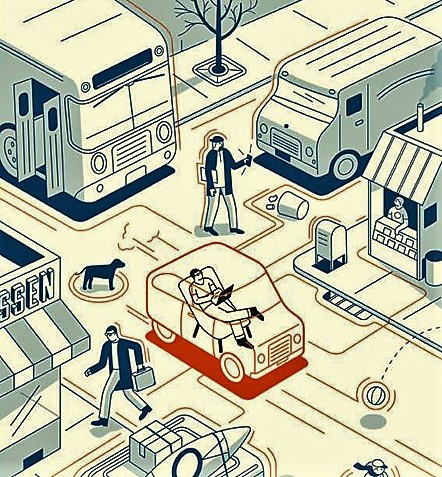Origins
Technological innovation is coming to unimaginable places, every day we are more and more surprised with goods and services that not only meet our daily needs, but give us ever greater comfort. The area of mobility is in constant change, putting at our reach, every single one of the advances that makes the technology development possible.
One of the creations which we have recently been working on is self driving cars, despite the fact that the invention is almost 40 years old. Ernst Dickmanns, a German scientist, was the first to develop a car capable of navigating traffic on its own, by installing cameras, sensors and computers in a Mercedes Benz vehicle. After some testing, in 1994, by a private company on a promising project, Dickmanns launched the first two automobiles in automatic driving mode on a French road. Without any doubt, this was the first big step in the mobility of autonomous driving and it unfailingly opened the door to what was unknown until then.
The Present
The development of mobility technology has allowed different companies to continue with the legacy of Dickmanns, such as Tesla, Uber ATG, BMW, Volkswagen, Mercedes Benz, among others. These companies continue working on autonomous cars, to be able to bring these vehicles to the open road in the near future.
Autonomous and unassisted cars are still being tested. That means, to make the cars circulate, the producers must have a special state license and it is only possible in certain authorized metropolitan areas; since a factor that is no less important is the absence of normative regulation.
In recent times, it has been possible to access the technology of autonomous vehicles but counting on the assistance of a driver. However, between 2017 and 2018, they have been protagonists of traffic accidents, since the drivers on board the car had no control of it. This has led lawmakers and the society to rethink the issue of the contractual and criminal legal figure that fits these vehicles in the event of an accident. Although companies such as Tesla promote the Autopilot system, it has been repeatedly clarified by one of its co-founders, that vehicles require the assistance of the driver facing any inconvenience of the system.
Until there is a legal framework, which contemplates the responsibilities that individuals have in case of accidents or contraventions produced by autonomous automobiles, the autonomous use of the vehicle without a driver must wait.
What’s Coming
The work of consolidating an appropriate system for the use of autonomous mobility in the near future continues in an arduous process. The essential factors, which must be present for the final concretion of the self-driving car are: 1- Citizen infrastructure suitable for the efficient use of this technological mobility; 2- Companies guarantee that the automobile system is sufficiently suitable for its circulation, and 3- Existence of an appropriate legal regime that guarantees both pedestrians and drivers safety in any circumstance of this kind of mobility.
No matter when, now or later, if autonomous cars are on our roads, we will surely be facing the biggest urban revolution ever.
